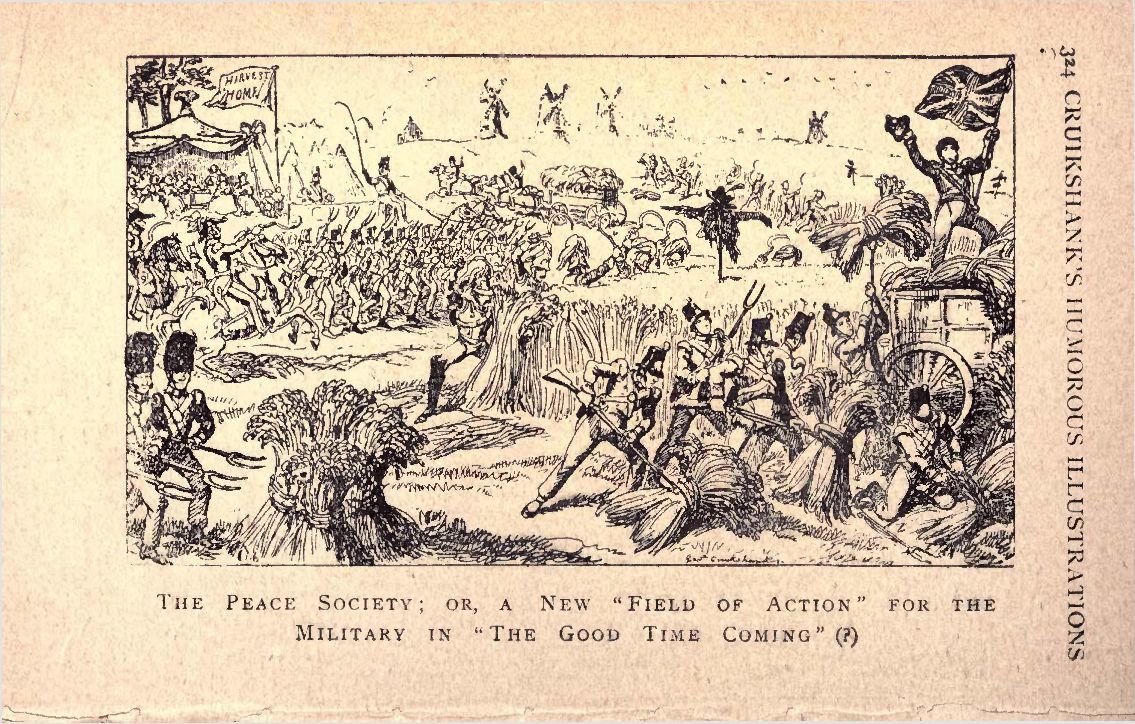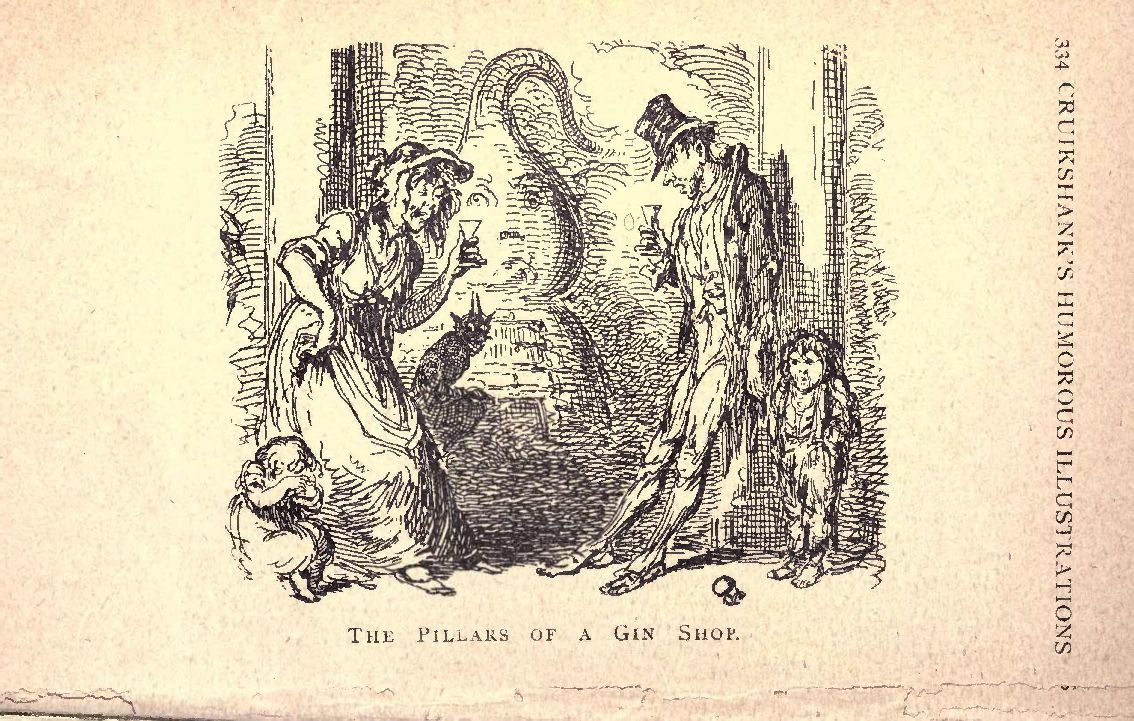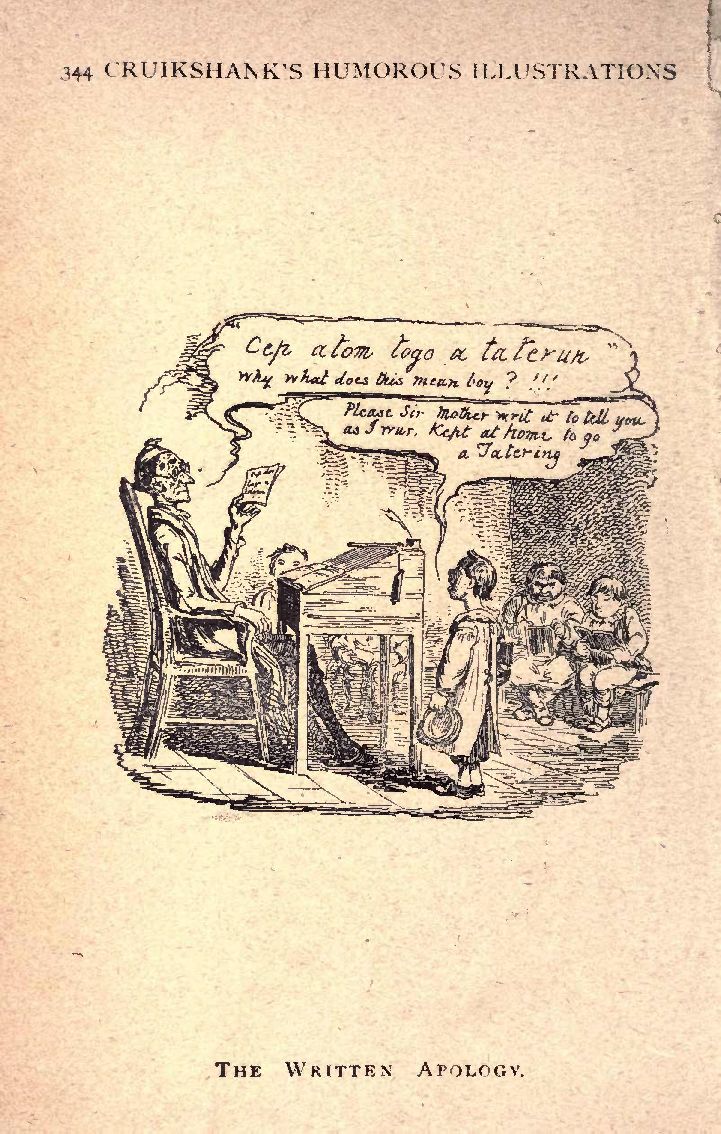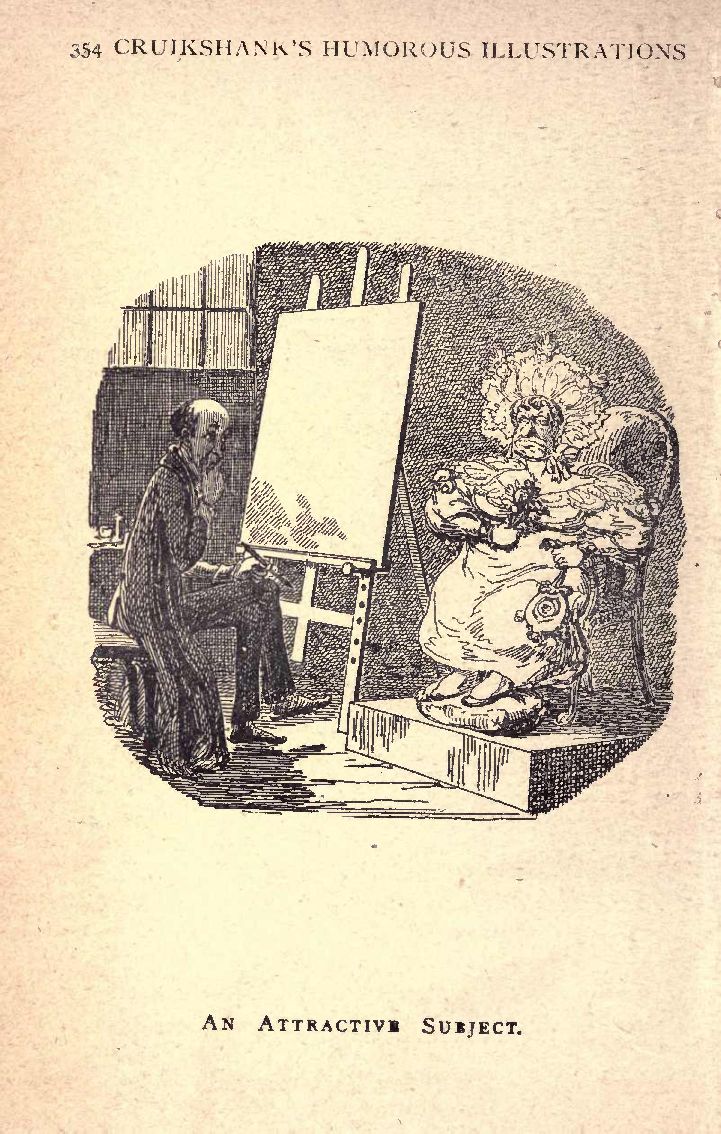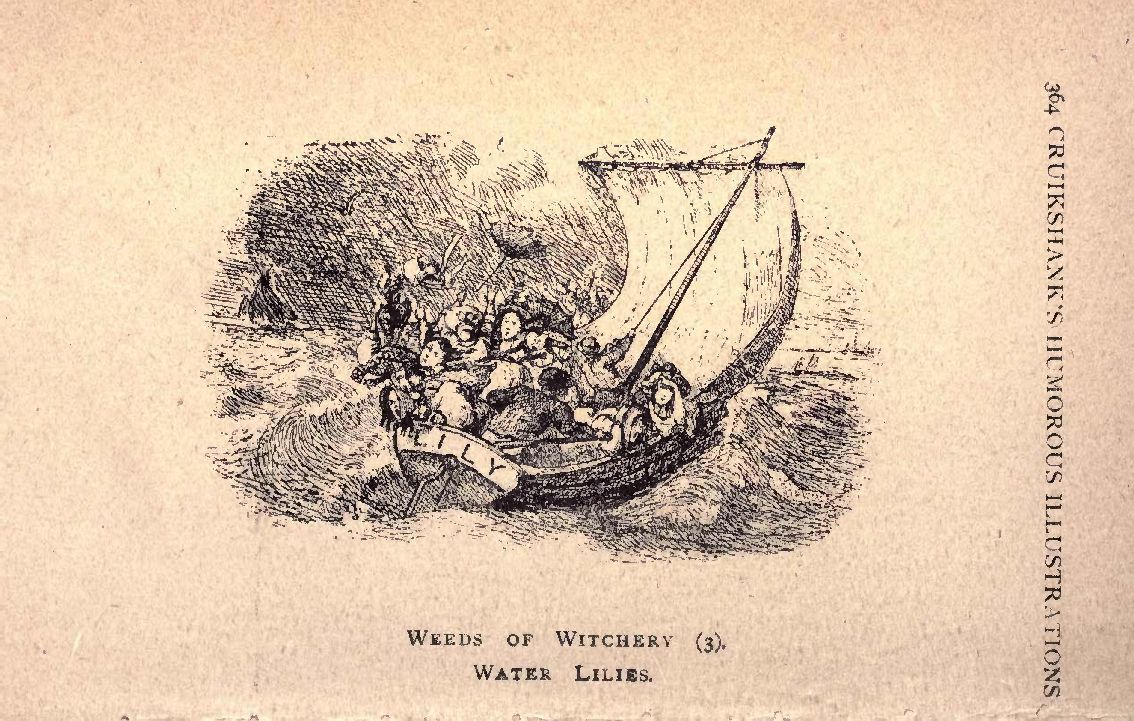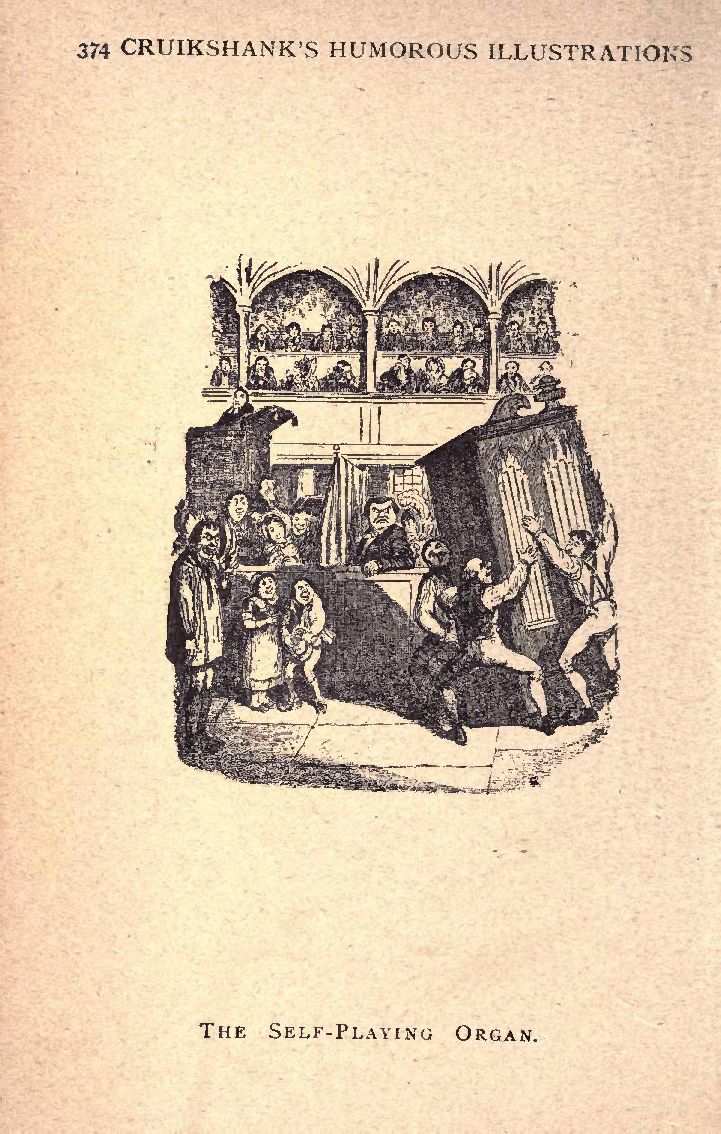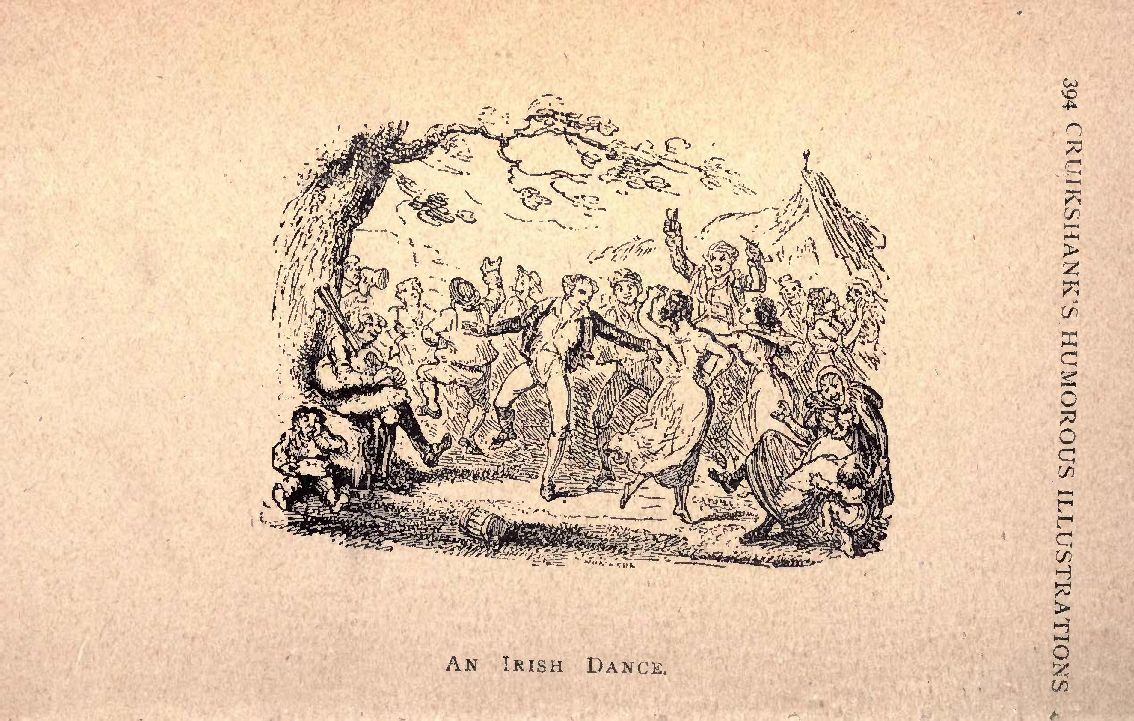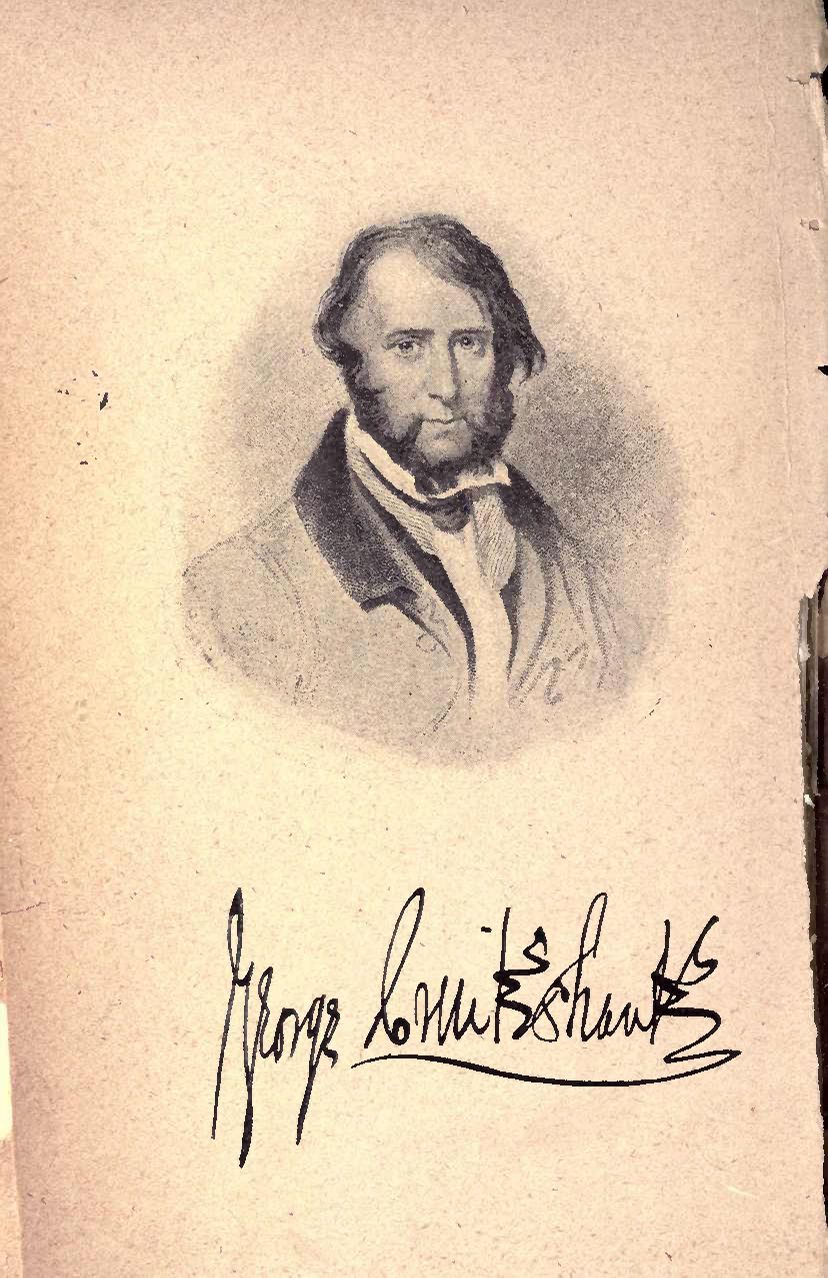

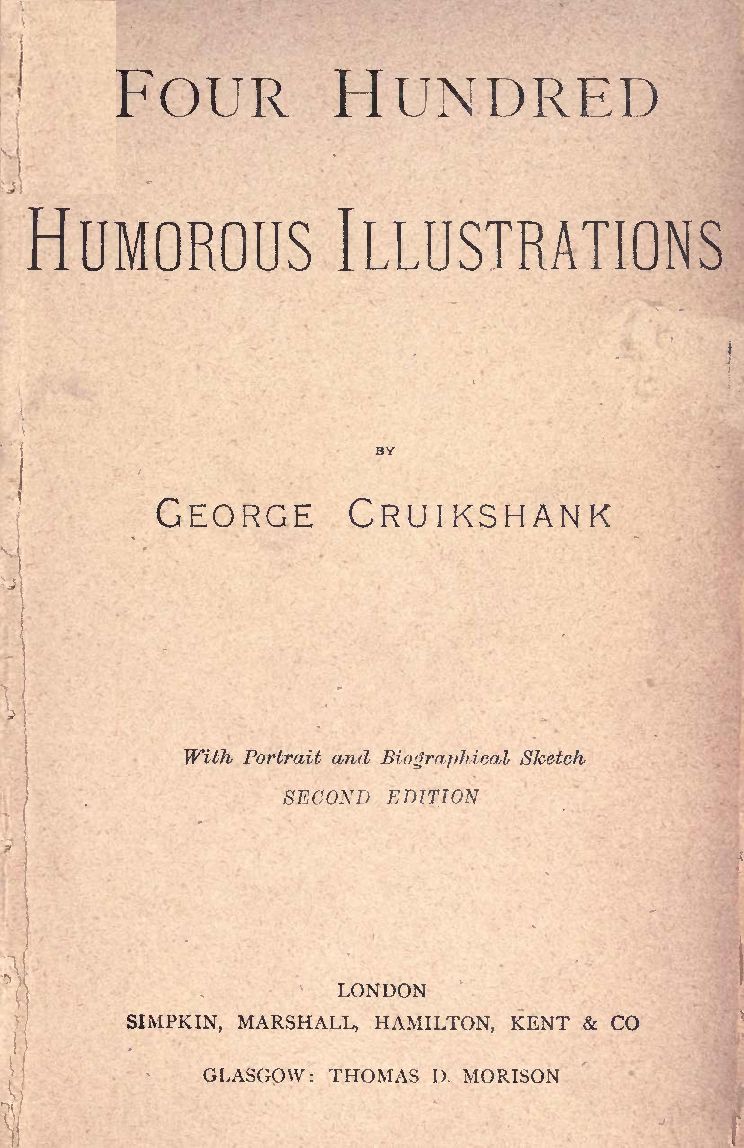
GEORGE CRUIKSHANK was born in London on the 27th of September, 1792. His parents were of Scotch nationality. The father, namely, Isaac Cruikshank, was an artist by profession, having considerable skill in water-colour painting and etching. The mother was a Miss Macnaughten, of Perth, a protégé of the Countess of Perth, and the possessor of a small sum of money. She was a person of energetic temper and strong will, and so thrifty that by saving she added considerably to her original pecuniary possession. She was also careful to bring up her children in a pious manner, being, along with them, a regular attendant at the Scotch Church in Crown Court, Drury Lane.
The couple took up house in Duke Street, Bloomsbury, where two sons and one daughter were burn. The elder son was born in 1789, named Isaac Robert, and ultimately became an artist of considerable reputation, but of much less originality in character and design than his younger brother. George was born about three years later. In artistic work he struck out in a new line, and although the difference between his work and that of his father and brother was not in every case strongly marked, still it was always sufficient to enable experts to select the productions of the youngest from those of his two seniors, a distinctly new and original vein appearing in them from the first.
While the three children were still quite young, the family removed to No. 117 Dorset Street, Salisbury Square, Fleet Street, where the parents let a portion of the house to lodgers. Here the father continued to work on his plates, while his wife coloured them by hand, soon, however, obtaining help in that respect from her sons. The boys went to school at Mortlake, and afterwards to Edgeware, but not for long, so that they owed little to school masters. The elder brother went to sea, and not returning when expected, was supposed to be lost, and mourned for as such. But after three years he suddenly re-appeared, and was welcomed home with joy,—resuming engraving for a livelihood Unfortunately for the family, the father died in 1811 Up to the time of his decease he appears to have had a steady and good business, having produced an immense number of sketches, coloured etchings, engravings, and designs produced in various modes, many of them in connection with the stage. At the time of his father's decease, the oldest son was twenty-two years of age, and George, the second son, nineteen. They were both well-advanced in their profession, and were quite capable of taking up and prosecuting their father's business connection.
Previous to all this, there is no doubt that George began to draw when he was a mere child. Some of his productions of 1799 are still extant. "George's first playthings," says Mr. Bates "were the needle and the dabber;" but play insensibly merged into work, as he began to assist his hard-worked father. His earliest inclination, it is said, was to go to sea, but his mother opposed this. The earliest job in the way of etching, for which he was employed and received payment, was a child's lottery ticket. This was in 1804, when he was about twelve years of age. in 1805 he made a sketch of Nelson's funeral car, and whimsical etchings of the fashions of the day. His earliest signed work is dated two years later, and represents the demagogue Cobbett going to St. James's. His father's early death threw the lad on his own resources, and he quickly found that he must fight for a place in the world, as Fuseli told him he would have to do for a seat in the Academy. Anything that offered was acceptable—headings for songs and halfpenny ballads, illustrations for chap books, designs for nursery tales, sheets of prints for children—a dozen on the sheet and a penny the lot—vignettes for lottery tickets, rude cuts for broadsides, political squibs—all trivial records but now of the utmost rarity and value.
While still very young, and before his father's decease, young George, with a view to becoming an Academy student, took specimens of his work to Fuseli for his inspection, when that, official told him that he would just have to "fight for his place," and at same time gave him permission to attend the lectures on painting. He attended two of the lectures and then stopped going, as his father held that if he was destined to be an artist he would become one without instruction, so that he never became a real student of that institution, nor had he a regular training in any way, so that his education, both so far as art and ordinary schooling was concerned, was very irregular and deficient. In fact, as a lad and young man he appeared to have been too full of animal spirits and too fond of sight-seeing to settle down to a hard course of study. The goings-on of the two brothers were severely condemned by their pious and strict mother. Occasionally she even went the length of castigating George when he returned home in the small hours from fairs and horse races, or the prize ring, and sometimes not quite sober.
He is described at this early age as filled with a reckless love of adventure, emulating the exploits of Tom and Jerry, with wild companions. His field of observation extended from the foot of the gallows to Greenwich fair, through coal-holes, cider-cellars, cribs, and prize-fighters' taverns, Petticoat Lane, and Smithfield. Its centre was Covent Garden Market, where the young bloods drank, and sang, and fought under the piazzas in those days. Such was pretty much the sort of education the young men had, and luckily George had the sense and talent to turn it all to good account later on with his pencil.
In course of time the artist was firmly established in business, and had numerous patrons among the publishers, some of whom were thriving to a considerable extent through Cruikshank's labours. After numerous isolated sketches, which brought him no small amount of fame, the first considerable series of designs by him appeared in Dr. Syntax's Life of Napoleon, consisting of thirty illustrations. Another long series was twenty-three illustrations to Pierce Egan's Life in London. As also twenty-seven etchings to Grimm's Popular Stories. These were followed by numerous other lengthened series, such as Mornings at Row Street, Three Courses and a Dessert, Punch and Judy, Gil Blas, My Sketch Book, Scott's Novels, Sketches by Boz, The Omnibus, and very numerous others. In all, he appears to have produced the illustrations for no fewer than three hundred and twenty volumes, not to speak of an immense number of isolated sketches of all sorts.
In 1847 and 1848 there came from his pencil his first direct and outspoken contribution to the cause of temperance in "The Bottle" and the "Drunkard's Children," although in some of his earlier designs he had satired the prevalent vice of drunkenness; he capped them all, however, in the eight plates of "The Bottle," in which he depicts the terrible downward march of degradation in the tragedy of an entire family, from the easy temptation of "a little drop" to the final murder of the wife. In "The Drunkard's Children," eight more plates, the remorseless moral is continued, the son becomes a thief, and dies in the hulks; the daughter, taking to the streets, ultimately throws herself over Waterloo Bridge. The two works had a great success. Moreover, they were dramatised in eight theatres at once, and were sold by tens of thousands. Hitherto Cruikshank had not been a strict abstainer, but now he became one with all the energy of his nature.
In Cruikshank's later years he made a good many attempts at oil painting, and exhibited quite a number of paintings at the Royal Academy all with more or less success. But the larger and best known of these is the "Worship of Bacchus;" it is a work of inexhaustible detail and invention, and was received by the public with great favour; the size is 7 feet 8 inches high by 13 feet 3 inches long, and it is now in the National Gallery.
However, to return to the affairs of the family. In time the brother Isaac Robert having got married, the whole family removed to King Street, Holborn. Soon afterwards the mother, George, and sister took a house in Claremont Square, Pentonville, at that period partially in the country. Later on, becoming married. George removed to Amwell Street, where he remained for thirty years. He afterwards resided in several suburban localities, but finally settled down at 263 Hampstead Road, where he died on the 1st of February, 1878, and in the following November his remains were finally deposited in the crypt of St. Paul's Cathedral.
In person Cruikshank was a broad-chested man, rather below the middle height, with a high forehead, blue-grey eyes, a hook nose, and a pair of strong whiskers. In his younger days he had been an adept at boxing and all manly sports, as also an enthusiastic volunteer, ultimately becoming lieutenant-colonel of the 48th Middlesex Volunteers. He preserved his energy almost to the last day of his life. Even at eighty he was ready to dance a hornpipe, or sing a song, "he was," says one who knew him well, "a light hearted, merry, jolly old gentleman, full physically of humorous action and impulsive gesture, but in every word and deed a God-fearing, queen-honouring, truth-loving, honest man."
The old school of caricaturists in which the names of Gilray, Rowlandson, Woodward, and Bunbury are most prominent, was noted chiefly for the broad, and in many cases, vulgar treatment of the subjects which were dealt with. The later school of caricaturists, in their mode of treating similar subjects, differed considerably from their predecessors. The leading member of the new school was George Cruikshank. He lived and worked during two generations, and may be considered as the connecting link between the old school and the new. At first Cruikshank to some extent followed Gilray and Rowlandson, but gradually fell off from their style of art, and in its stead produced work of a more serious and more artistic nature, which was the beginning of a new era in the history of caricature. His illustrations to innumerable works are of the highest order, and have made for him an everlasting reputation.

212 213 214 215 216 217 218 209 220 221 222 223 224 225 226 227 228 229 230 231 232 233 234 235 236 237 238 239 240 241 242 243 244 245 246 247 248 249 250 251 252 253 254 255 256 257 258 259 260 261 262 263 264 265 266 267 268 269 270 271 272 273 274 275 276 277 278 279 280 281 282 283 284 285 286 287 288 289 290 291
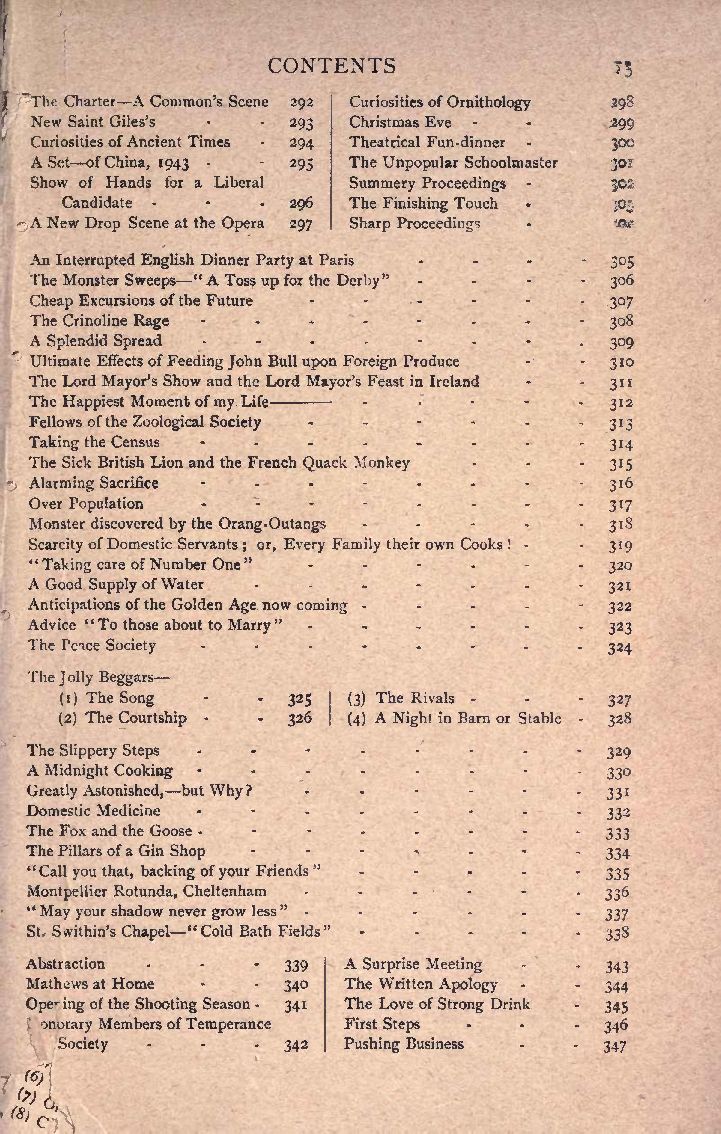
292 293 294 295 296 297 298 299 300 301 302 303 304 305 306 307 308 309 310 311 312 313 314 315 316 317 318 309 320 321 322 323 324 325 326 327 328 329 330 331 332 333 334 335 336 337 338 339 340 341 342 343 344 345 346 347
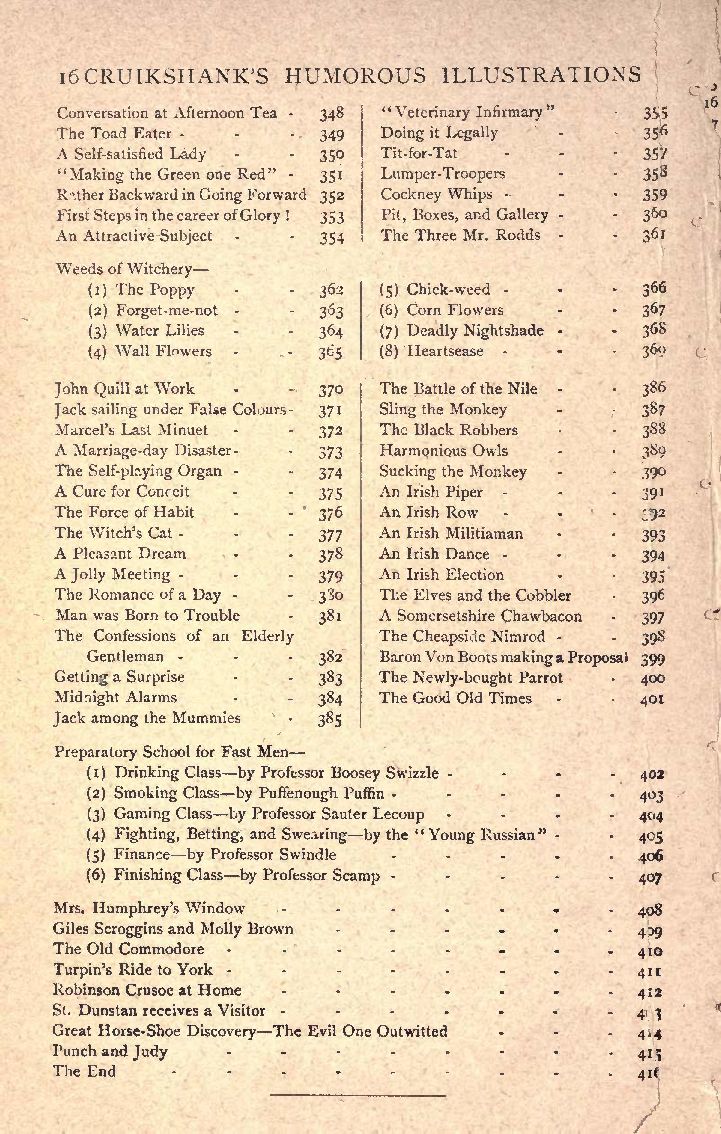
348 349 350 351 352 353 354 355 356 357 358 359 360 361 362 363 364 365 366 367 368 369 370 371 372 373 374 375 376 377 378 379 380 381 382 383 384 385 386 387 388 389 390 391 392 393 394 395 396 397 398 399 400 401 402 403 404 405 406 407 408 409 410 411 412 413 414 415 416
















































































































